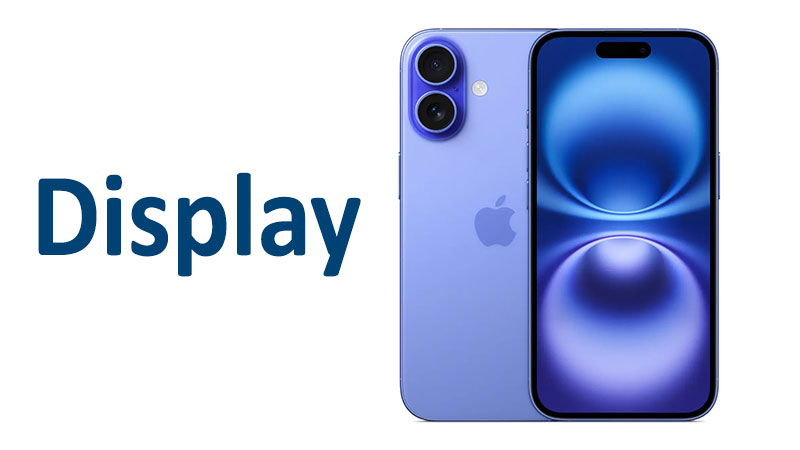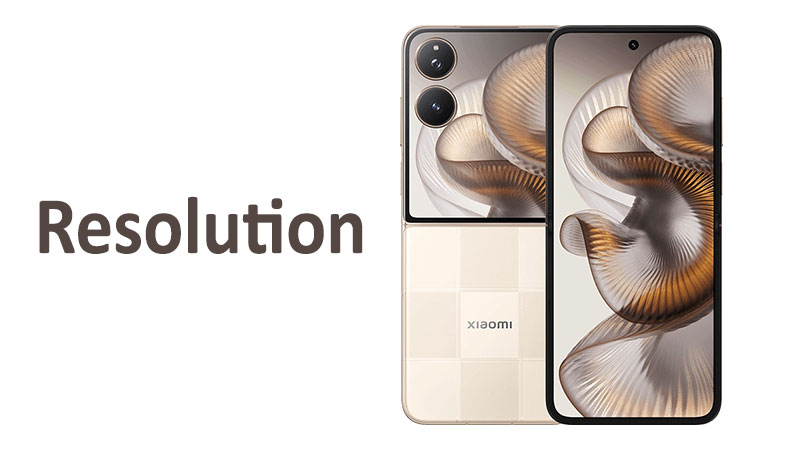The display is the window to your digital world. It’s the primary way you interact with your smartphone. For the Apple iPhone 16, the screen is a cornerstone of the user experience. This article will explore the Apple iPhone 16 display, diving deep into its resolution, quality, and features. We’ll examine what makes this screen stand out and what buyers need to know before they buy.
The iPhone 16 Display: Specifications and Technology
The iPhone 16’s display is a triumph of engineering. It combines cutting-edge technology to deliver stunning visuals. Understanding the technical specifications is key to appreciating its quality.
Super Retina XDR OLED Technology
At its core, the iPhone 16 features a Super Retina XDR OLED display. This isn’t just a marketing term. It signifies a panel that uses organic light-emitting diodes. Each pixel can be individually lit or turned off. This provides perfect blacks and an infinite contrast ratio.
- OLED vs. LCD: Traditional LCD screens require a backlight. This can lead to a “grayish” look in dark scenes. OLED technology avoids this by simply turning off the pixels. This results in true blacks and incredible depth. It’s a key advantage for watching movies or viewing photos.
Resolution and Pixel Density
The iPhone 16 display has a resolution of 1179 x 2556 pixels. This gives it a sharp pixel density of approximately 460 ppi (pixels per inch). This high density means that individual pixels are virtually invisible to the naked eye. Text appears crisp, and images are rendered with fine detail. This is what contributes to the screen’s overall clarity and sharpness.
Brightness and HDR Support
One of the most impressive features is the display’s brightness. It has a typical maximum brightness of 1000 nits. In high-brightness mode (HBM), it can reach a staggering 2000 nits.
- HDR and Dolby Vision: The iPhone 16 supports HDR10 and Dolby Vision. These are high dynamic range formats. They allow the screen to display a wider range of colors and a greater contrast between the brightest whites and darkest blacks. This makes content look more vibrant and true-to-life. The 2000 nits of peak brightness are particularly useful for HDR content and for outdoor visibility.
Display Protection
The screen is protected by Ceramic Shield glass. This is the 2024 generation of the technology. It’s a special type of glass infused with nano-ceramic crystals. Apple claims it’s tougher than any other smartphone glass. It offers enhanced protection against drops and scratches. It’s rated at a Mohs level 4, indicating its robust scratch resistance.
The iPhone 16 Display: Pros and Cons
Like any technology, the iPhone 16’s display has its strengths and weaknesses. It’s important to consider both sides.
Pros
- Exceptional Image Quality: The Super Retina XDR OLED panel delivers stunning color accuracy and deep blacks. This makes all content, from photos to movies, look incredible.
- High Brightness: The 2000 nits of peak brightness make the screen easily viewable even in direct sunlight. This is a significant advantage for outdoor use.
- Durable Protection: The latest Ceramic Shield provides peace of mind. It makes the screen more resistant to everyday scratches and accidental drops.
- HDR and Dolby Vision: Support for these high dynamic range standards ensures that supported content is displayed as the creators intended.
- Dynamic Island: The display features the Dynamic Island, which seamlessly integrates notifications and alerts. It’s a unique and highly functional design element.
Cons
- 60Hz Refresh Rate: The standard iPhone 16 model retains a 60Hz refresh rate. This is a noticeable drawback. Many competing Android phones, and even Apple’s own Pro models, offer 120Hz or higher refresh rates.
- No Always-On Display: The 60Hz limitation also means the standard model lacks the Always-On display feature. This is a key feature of the Pro models and a common feature on many Android phones.
- PWM Dimming: The screen uses Pulse-Width Modulation (PWM) for brightness control. Some sensitive users may notice a flickering effect at lower brightness levels.
iPhone 16 vs. Previous Models and Competitors
Comparing the iPhone 16’s display to its predecessors and rivals highlights its position in the market.
Comparison with iPhone 15
The iPhone 16’s display is an evolution, not a revolution. It shares many of the same core specifications with the iPhone 15. The resolution, pixel density, and typical brightness levels are identical. The key improvement is the next-generation Ceramic Shield, which is a durability upgrade. However, the biggest difference remains with the Pro models.
Comparison with iPhone 16 Pro
This is where the distinction becomes stark. The iPhone 16 Pro and Pro Max models feature a different display technology. They use LTPO (low-temperature polycrystalline oxide). This technology enables a variable refresh rate from 1Hz to 120Hz, which Apple calls ProMotion. This makes scrolling and animations incredibly smooth. The LTPO also allows for the Always-On display feature, which the standard iPhone 16 lacks. The Pro models also have larger display sizes: 6.3 inches for the Pro and 6.9 inches for the Pro Max.
Comparison with Android Flagships
Many Android flagship phones have adopted higher refresh rates for their standard models. Devices like the Samsung Galaxy S24 and Google Pixel 9 offer adaptive refresh rates. This can make the iPhone 16 feel less “pro-level” in comparison, despite its otherwise excellent display quality. While the iPhone 16’s color accuracy and peak brightness are top-tier, the absence of a high refresh rate is a significant competitive disadvantage for users who value smooth motion.
What a Buyer Should Know
When considering the Apple iPhone 16 display, a buyer should think about their specific needs and priorities.
- For the average user, the iPhone 16’s display is more than sufficient. Its colors are vibrant, and the brightness is excellent for daily use. The lack of a high refresh rate may not be noticeable to those who haven’t experienced it.
- For gamers, content creators, or tech enthusiasts, the 60Hz refresh rate might be a deal-breaker. The smoother scrolling and more fluid animations on the iPhone 16 Pro or competing Android devices offer a superior user experience for these groups.
- Durability is a key factor. The new Ceramic Shield glass is a welcome addition. It provides a level of protection that can save you from a costly screen repair.
- The Dynamic Island is a practical and visually appealing feature. It’s a good way to manage notifications and background activities without being intrusive.
Conclusion
The Apple iPhone 16 display is a testament to Apple’s commitment to quality. It’s a visually stunning Super Retina XDR OLED panel with a sharp 1179 x 2556 pixel resolution. Its support for HDR10 and Dolby Vision, combined with a peak brightness of 2000 nits, makes it one of the best screens for watching content. The improved Ceramic Shield glass also provides a significant boost in durability.
However, the display’s biggest weakness is its 60Hz refresh rate. This is a feature that many of its competitors, and even its own Pro siblings, have surpassed. This means that while colors and sharpness are top-notch, the fluidity of the interface isn’t as smooth as it could be.
In conclusion, the iPhone 16 offers a superb viewing experience for most people. Its display is bright, vibrant, and incredibly sharp. If you prioritize durability and exceptional image quality, and don’t mind the standard refresh rate, the iPhone 16’s display won’t disappoint. However, if you’re a heavy user who values the smoothest possible interaction, you should consider the iPhone 16 Pro or other phones with a higher refresh rate display.
FAQ
No, the standard iPhone 16 has a 60Hz refresh rate. The 120Hz ProMotion technology is reserved for the iPhone 16 Pro and iPhone 16 Pro Max models.
The iPhone 16 has the same typical and HDR peak brightness as the iPhone 15, with a peak brightness of 2000 nits in HBM.
Ceramic Shield is a proprietary glass-ceramic material developed by Apple. It’s a mix of glass and nano-ceramic crystals, designed to be tougher and more resistant to drops and scratches.
Super Retina XDR is Apple’s branding for its high-quality OLED displays. It highlights specific features like high contrast, wide color gamut, and high brightness. It is essentially a refined and enhanced OLED panel.
No, the Always-On display is a feature exclusive to the iPhone 16 Pro and Pro Max models, which are equipped with LTPO technology that allows the refresh rate to drop to 1Hz.



